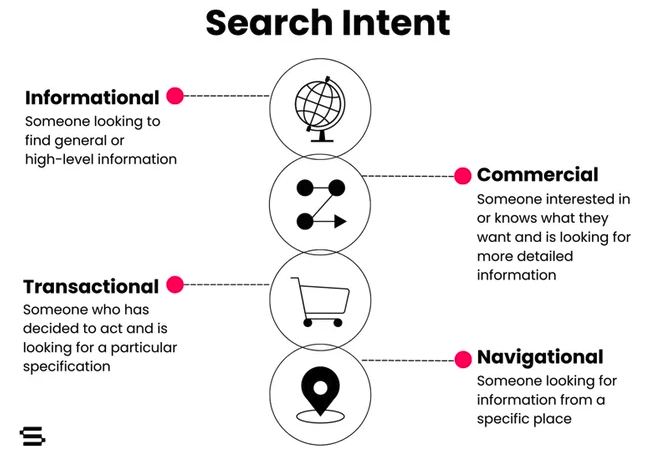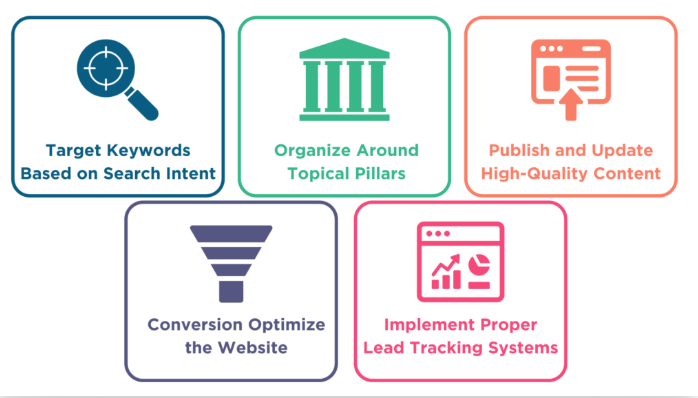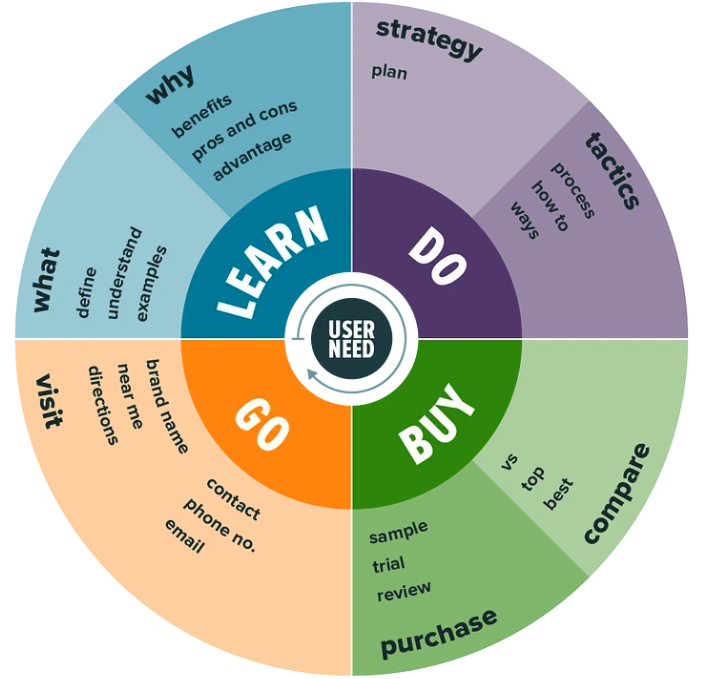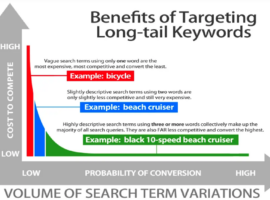Mastering Keyword Search Intent: How to Align Your Content for Better Rankings
Related Questions Asked and Answered
 1. What is search intent, and why is it important for content creation?
1. What is search intent, and why is it important for content creation?
Search intent refers to the purpose behind a user’s search query. It’s the reason why a person types in a specific term into a search engine. Understanding keyword search intent is vital because aligning your content with the searcher’s intent ensures that you meet their needs, providing the right information or solution. If your content addresses what the user is genuinely looking for, it increases the chances of ranking higher on search engine results pages (SERPs).
When content aligns with search intent, users are more likely to engage with it, trust it, and take actions like clicking, signing up, or purchasing. This creates a mutually beneficial relationship between search engines, content creators, and users.
2. How do I determine the search intent of a keyword?
Determining the search intent of a keyword is crucial for creating the right type of content. One of the best ways to identify keyword intent is to use the Semrush Keyword Overview Tool. By simply entering a keyword into this tool, you’ll receive valuable insights, such as search intent (informational, transactional, navigational, or commercial) and other metrics like volume, trends, and competition.
To dive deeper, look at the SERP Analysis for the keyword. This section shows you the top-ranking pages for that term. By analyzing these pages, you can gain an understanding of the type of content that ranks best—whether it’s how-to guides, product reviews, or comparison articles.
3. What are the different types of search intent, and can you give an example for each?
Search intent can typically be broken down into four categories:
- Informational Intent: The user is looking for information on a specific topic. Example: “What is a dog bone?” The user wants general information about dog bones.
- Navigational Intent: The user wants to find a specific website or page. Example: “Petco dog bones” indicates the user is looking for a product page on Petco’s website.
- Transactional Intent: The user is ready to make a purchase or take an action. Example: “Buy dog bones” suggests the user is prepared to purchase dog bones online.
- Commercial Intent: The user is researching products or services to make a purchase decision. Example: “Best dog bones” shows that the user is comparing options before buying.
By identifying the intent behind a keyword, you can tailor your content to meet the user’s expectations.
4. How can I align my content with keyword search intent?
Aligning your content with search intent requires more than simply targeting a keyword. First, determine what the user truly wants when they search for that term. Then, create content that directly answers their query. For example, if the intent is informational, write a comprehensive guide on the topic. If the intent is transactional, make sure your product pages are clear, easy to navigate, and optimized for conversions.
Additionally, the structure of your content should be tailored to match the intent type. For informational queries, long-form content or FAQs may work well. For transactional searches, concise, product-focused content with strong calls to action may be more appropriate.
5. How do I use Semrush’s Keyword Overview Tool for search intent analysis?
Semrush’s Keyword Overview Tool is an excellent resource for analyzing search intent. After entering a keyword into the tool, you’ll see a breakdown of the keyword’s metrics, including its search intent. The tool will display whether the intent is informational, navigational, transactional, or commercial.
In addition, you can dive into the SERP Analysis to examine the types of content that are ranking. By understanding what formats and content types work well for your target keyword, you can refine your content strategy to meet the searcher’s needs.
 Align Your Content with Search Intent: A Strategy for Success
Align Your Content with Search Intent: A Strategy for Success
In today’s digital age, where competition for attention online is fierce, it’s more important than ever to ensure your content matches the user’s search intent. Search engines have become smarter, and they prioritize delivering the most relevant content to users. This means that if your content doesn’t align with a user’s search intent, your website might not rank as well on search engine results pages (SERPs).
Whether you’re a seasoned marketer or just getting started, understanding how to properly align your content with search intent can significantly improve your website’s visibility, user engagement, and conversions. In this guide, we’ll dive into the importance of search intent and how you can use it to shape your content strategy effectively.
Understanding Search Intent: The Foundation for Content Alignment
Search intent, also known as query intent, is the reason behind a searcher’s query. By understanding search intent, you can ensure that the content you create aligns with the user’s expectations and needs. This, in turn, leads to better performance in search engines like Google.
There are four primary types of search intent:
- Informational: When a user is seeking knowledge or answers about a particular topic, they exhibit informational intent. For example, someone searching for “What is a dog bone?” is looking to learn more about the subject.
- Navigational: This intent is when a user is trying to find a specific website or page. For example, if someone searches for “Petco dog bones,” they are looking for that specific company’s page that sells dog bones.
- Transactional: When users are ready to take action, such as making a purchase, they exhibit transactional intent. An example is “buy dog bones,” where the user is looking to complete a purchase.
- Commercial: Commercial intent is when the user is researching before making a decision. For example, “best dog bones” suggests the user is comparing options before buying.
The Role of Search Intent in SEO
Search intent plays a critical role in SEO. Google’s algorithm is designed to match the best content to a user’s search query, so when your content aligns with the searcher’s intent, you’re more likely to rank higher in the search results.
By determining the search intent of a keyword, you can tailor your content to provide exactly what the user is looking for. This includes using the right tone, content format, and addressing specific subtopics that users are searching for.
For example, if a user searches for “how to train a dog,” your content should focus on providing a comprehensive, step-by-step guide on dog training, using clear instructions and tips. If the search is transactional, such as “buy dog training collars,” your page should emphasize the product’s benefits, features, and why the user should purchase it from you.
Using Semrush’s Keyword Overview Tool for Intent Analysis
One of the most effective ways to determine keyword intent is by using a Keyword Overview Tool. This tool provides a detailed breakdown of the keyword’s intent, search volume, competition, and other important metrics.
Steps to use the Keyword Overview Tool:
- Enter your keyword into Semrush’s tool.
- Review the search intent section, which will tell you if the intent is informational, navigational, transactional, or commercial.
- Scroll down to the “SERP Analysis” to see the types of content that are ranking for this keyword.
- Analyze the top-ranking pages to identify common patterns, such as the types of content (blog posts, product pages, etc.), formats (listicles, videos, etc.), and subtopics covered.
By understanding the top-ranking content, you can create your own content that meets or exceeds the expectations of both the search engine and the user.
Aligning Content with Search Intent: Best Practices
 Once you’ve identified the search intent behind your keywords, it’s time to create content that aligns with that intent. Here are some best practices for doing so:
Once you’ve identified the search intent behind your keywords, it’s time to create content that aligns with that intent. Here are some best practices for doing so:
- For Informational Intent: Create long-form content, such as how-to guides, educational articles, or in-depth blog posts. Provide valuable insights and clear answers to common questions.
- For Navigational Intent: Optimize your website’s internal navigation to make it easy for users to find what they’re looking for. Include clear, easy-to-follow paths to your key pages.
- For Transactional Intent: Focus on product pages, services, or any content designed to facilitate a conversion. Use strong calls to action, detailed product descriptions, and clear images.
- For Commercial Intent: Provide comparison pages, reviews, or detailed product descriptions. Users in the commercial intent stage are often comparing options, so giving them clear and concise information can help them make a decision.
Tools and Resources for Analyzing Search Intent
While Semrush’s Keyword Overview Tool is a fantastic resource, there are other tools and methods that can help you analyze search intent and create the best content:
- Google’s SERP: Always examine the top-ranking pages for your target keyword. This can give you a good indication of the content format and structure that performs well for that query.
- Answer the Public: This tool generates a list of questions people are asking around a specific keyword. This can give you ideas for creating content that answers those questions and aligns with informational intent.
- Google Analytics: By analyzing user behavior on your website, you can identify which pages are meeting the needs of users with different intents.
By leveraging these tools, you can make data-driven decisions that improve your content strategy and SEO performance.
The Importance of User Experience (UX) in Content Alignment
While keyword intent is crucial, it’s also important to consider the user experience (UX) when creating content. Even if your content matches the user’s intent, poor UX can lead to high bounce rates and low engagement.
Ensure that your content is easy to read, well-structured, and optimized for mobile devices. A clean, user-friendly design combined with high-quality, relevant content is key to keeping users on your site longer and increasing conversions.
Key Takeaways
- Search intent is the reason behind a user’s search query. Understanding search intent is critical to creating content that matches user expectations and ranks well on search engines.
- There are four main types of search intent: informational, navigational, transactional, and commercial. Each type requires a different approach to content creation.
- Using tools can help determine search intent. By analyzing a keyword’s intent, you can create content that aligns perfectly with what users are searching for.
- Creating content that aligns with search intent improves SEO performance. Content that meets user expectations is more likely to rank well, drive traffic, and result in conversions.
- Focus on user experience (UX) alongside content alignment. Good content alone isn’t enough. A well-structured, easy-to-navigate website will enhance user engagement and improve results.
Share This Blog On Social Media
- Instagram: @brandingmarketingadvertising
- YouTube: BMA YouTube Channel
- LinkedIn: BMA LinkedIn Profile
- Facebook: BMA Facebook Profile
- Google Business Profile: Branding, Marketing, Advertising









